The heritage of Japanese sushi is long and rich but there are some questions surrounding it like "Is sushi raw fish?". Our Japan Experts can't wait to bust this popular myth.
Sushi in Japan is largely thought to have occurred during the second century A.D. out of the need to keep meat fresh without refrigeration. Meat and fish would be cured, wrapped in rice and kept in a cool place to preserve its freshness. After several months, it would ferment meaning it would last longer than just being cured alone. Then, whenever required, the cured meat could be eaten and the rice discarded. The idea spread from China to Japan, where fish was a common food staple. The Japanese adapted it by using rice wine, vinegar or sake as another fermentation method – this way they didn’t have to wait so long for the meat or fish to be cured.
However, it wasn’t until 1820’s Japan that Edo-style sushi was created, where chefs would use raw fish in their cooking. Fast-forward 100 years, Tokyo by then was over-run with street food stalls and vendors supplying nigiri-sushi (raw fish on top of rice) – often called ‘hand sushi’.
Sushi today is now seen as a healthy lunch-time alternative and restaurants have flourished across the world (including the Maldives!) where you can still see both Edo-style and nigiri-style, in addition to new favourites, like the California Roll.
Is sushi best served fresh?
It’s a commonly held idea that sushi is best at its freshest but this simply isn’t true. It’s more often the case that it’s not. While most ingredients, like the vegetables, are usually better fresh, the meat and fish are often best when properly prepared and aged, just as they once were. For example, sushi with tuna in Japan is rarely eaten fresh; it’s often aged for between 3 and 4 days before eaten – in specialist restaurants, sometimes up to 2 weeks!
Aged meat or fish generally taste better after their amino acids are released, producing more flavour. Fish or meat in Japan is often placed between two sheets of kelp, which allow it to age and bring out the flavour. The best Sushi chefs in Japan will know when the meat or fish is ready and will serve it at its appropriate time each season.
Should sushi and Sake be paired together?
For those who don’t drink but still want to savour sushi in Japan – you can. There’s no definitive rule that you have to drink sake with your sushi, none whatsoever. In fact, most Japanese people don’t do this as sushi and sake are both made with rice, which for them, is often too much of a similar produce. Sushi is often paired with either a local beer or green tea – refreshing and delicious!
Is sushi just raw fish?
Fish isn’t the only star when creating sushi, the shari (rice) often takes centre stage too – it’s just as important as the other components. To Sushi chefs, the real treat is in fact the rice. This is because there’s a very delicate art to getting the rice just right – with many techniques available. Sushi rice is a perfect balance of cooked rice, salt, sugar and either red or white vinegar, sometimes sake. From buying the rice to preparing it, Sushi chefs take their time with this process particularly - it can make the most amount of difference to the taste.
For Sushi chefs, this is also where they get to be their most competitive – anyone can buy decent sushi-grade fish or meat, but getting the rice right – with its delicate flavours – is the real achievement. It’s something they can be graded and compared on in their training.
Do you have to eat sushi in a michelin star restaurant?
If you didn’t already know, Japan holds the record for the most Michelin stars in any country but whilst these are a symbol of quality, some of the best sushi in Japan cannot be found in these restaurants. It’s often traditional neighbourhood sushi restaurants offering a casual sushi lunch that are greatly respected for their culinary skills, not the sleek, stylish starred residences that you may imagine paying up to £100 for a meal in. But just like any city, you need to seek out these gems – so do your research or ask an expert before you leave!
Is sushi eaten at every meal?
Japanese people don’t just eat sushi. It’s a common myth that they eat it for breakfast, lunch and dinner but this isn’t the case. While sushi connoisseurs do eat it daily, in general, most people don’t – they’ve got plenty of other dishes to be eating amongst one of the world’s most varied cuisines.
Eating sushi in Japan is also seen as an experience to be remembered. Bar the street vendors who are still selling their nigiri-style, Japanese families and friends go to sushi ‘temples’ or ‘shrines’ to savour it and only do so on special occasions. It’s largely due to tourists that Japanese people are given the label of forever eating sushi, as they do it themselves!
Are all sushi chefs men?
Now, this myth has been perpetuated for years and often astounds those who’re planning their trips to Japan. The commonly–held belief is that women’s hands were simply too warm to handle the delicate sushi rice, spoiling the sushi before it’s even settled. This is not true and biologically incorrect, women could have been sushi chefs but centuries ago, this wasn’t an occupation women did – they tended not to cook in public places, this was a male domain. But now, there are plenty of female sushi chefs across Japan – some of the best in fact!
What are the dfferent types of sushi?
Sushi can be both contemporary and traditional – it doesn’t have to be one or the other. In Japan, there are four main types of sushi that are commonly served: maki, sashimi, nigiri and chirashi.
- Maki: This is your common ‘roll’. Ingredients are rolled in rice or seaweed and then cut up into small pieces. Typically, a sauce is drizzled on top with a garnish of ginger and cress. Chefs tend to use this kind of sushi to really demonstrate their creativity.
- Sashimi: Sushi-grade salmon and tuna slices, usually served with boiled or steamed sushi rice on the side.
- Nigiri: A bed of sushi rice that’s normally moulded into a bite-size piece, with fish placed on top and a ribbon of seaweed that holds both together.
- Chirashi: This is similar to Sashimi but instead of your usual sushi rice, it's covered in vinegar.
But both these and contemporary choices, like the California roll can be found at local sushi restaurants across Japan, so don’t worry!
Do I have to sit on the floor when eating in Japan?
Most sushi restaurants in Japan now have two styles of seating available for guests – tables and chairs, as well as tatami floors (low tables with cushioned floors). With the latter, you’ll be asked to remove your shoes as a sign of respect and sit in a kneeling position whilst savouring your sushi. Always worth experiencing at least once whilst you're on holiday.
Do I have to use chopsticks?
Some sushi can be hard to eat and it can be even harder when attempting to with chopsticks. Although it can be fun for the first few minutes, if you’re still struggling after that, the chances are you may get a little annoyed (and a tad hungry!). That’s why in sushi restaurants it’s not obligatory to use them. For sushi rolls, you can use your hands and there’s no shame in doing so – it makes eating these fragile delicacies that little bit easier.
While we’re on the subject, don’t rub your chopsticks together in Japan before you eat – you’ll insult the chef. What you’re effectively saying is that your chopsticks are cheap meaning they may cause splinters, in turn calling their restaurant and sushi cheap.
Inspired?
Sushi is the most famous Japanese dish outside of Japan, and one of the most popular dishes among the Japanese themselves, for good reason – try it for yourself on your own culinary journey.



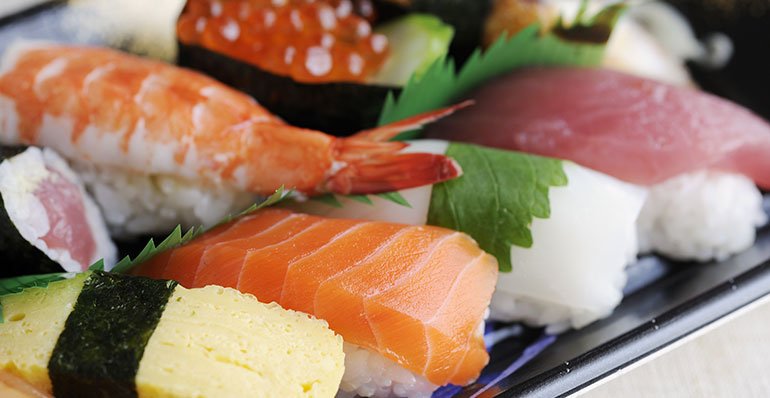
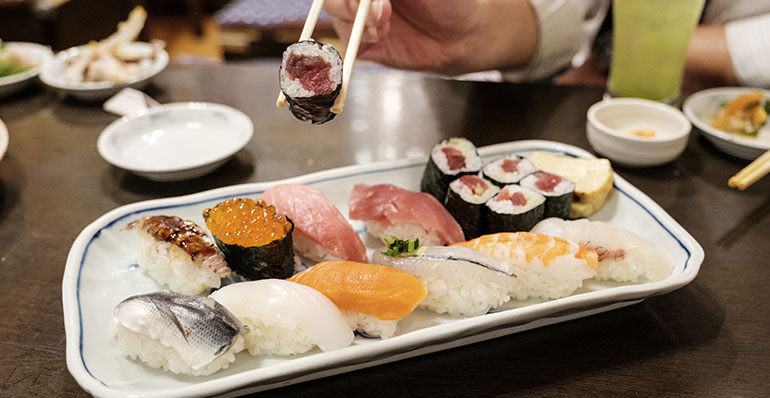
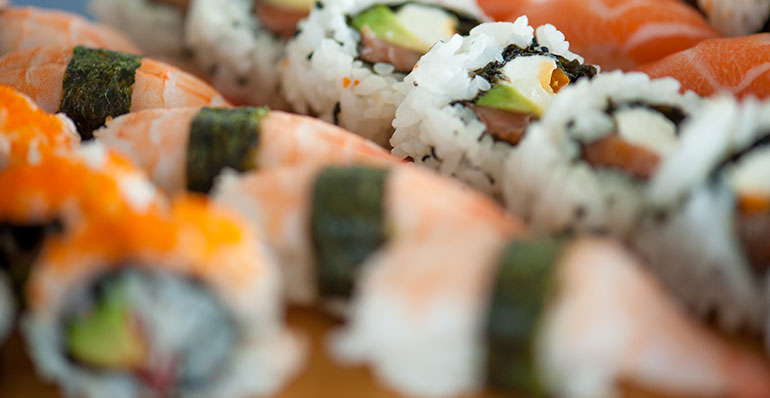
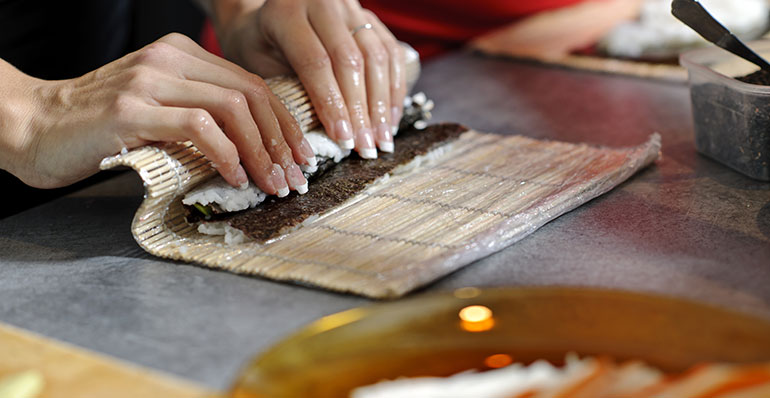
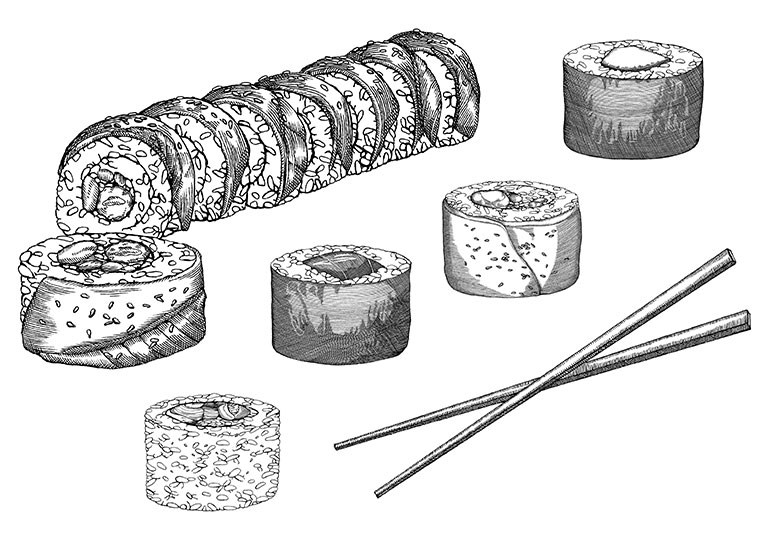
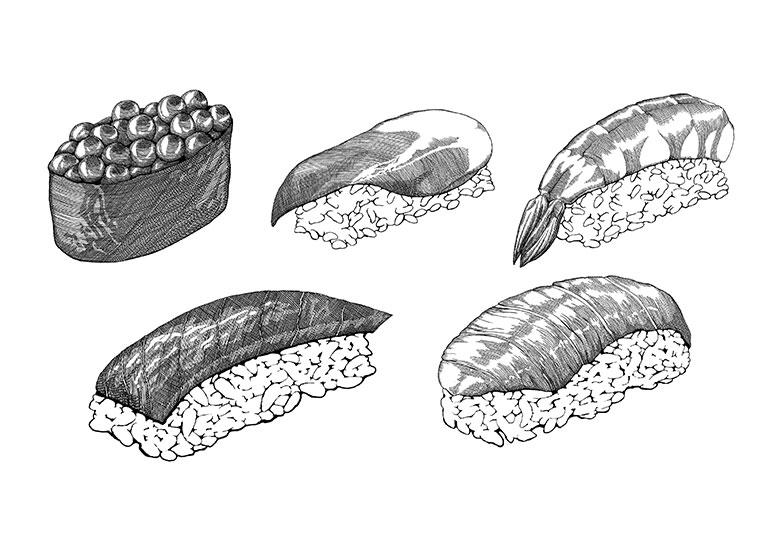
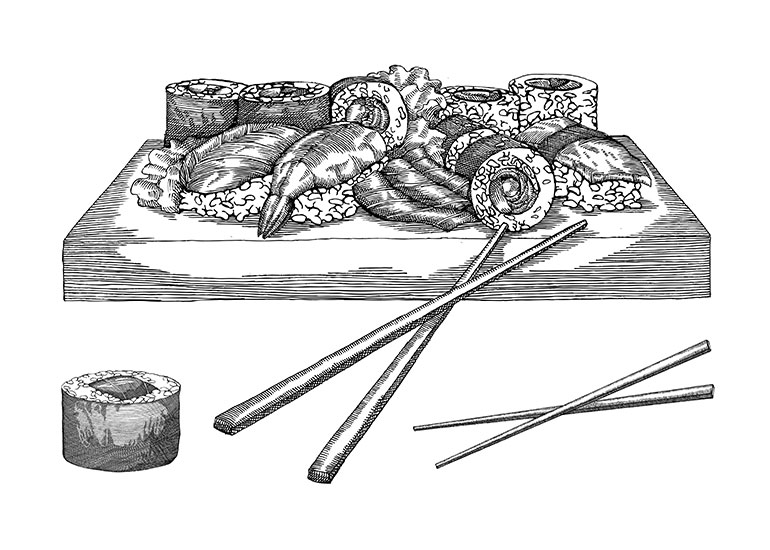
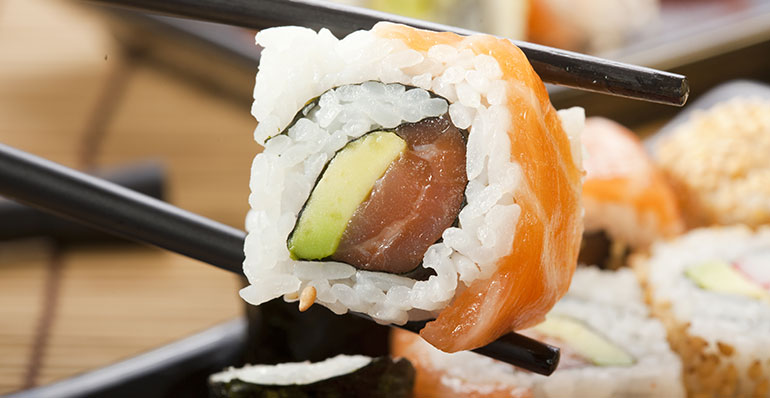

_w=24_h=25.webp?v=a392d311dd743e3625a1f57ba6fc3b967468f36c)
_w=24_h=25.webp?v=a392d311dd743e3625a1f57ba6fc3b967468f36c)
_w=24_h=25.webp?v=a392d311dd743e3625a1f57ba6fc3b967468f36c)